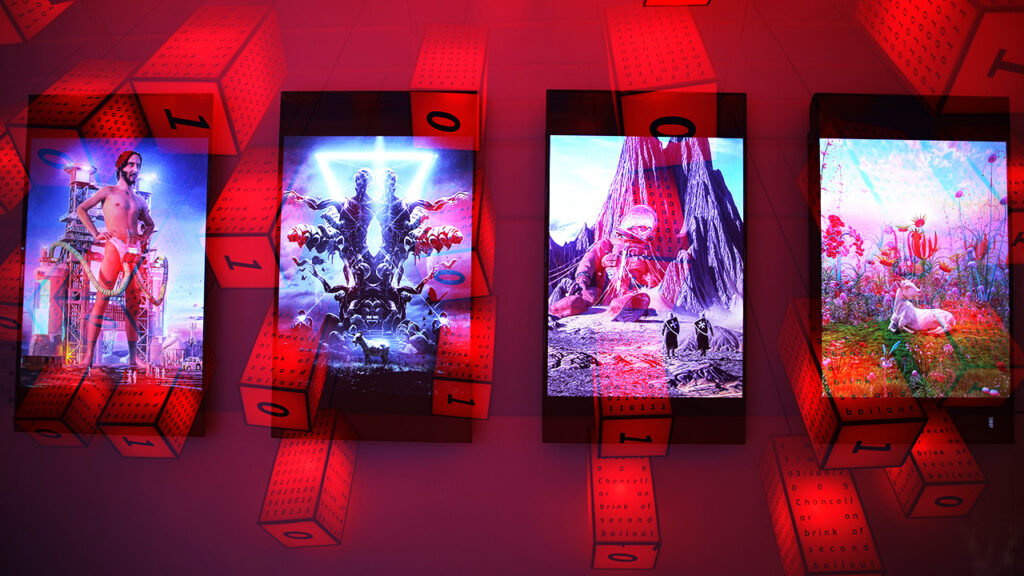Earlier in July, the Art + Technology Lab of the Los Angeles County Museum of Art (LACMA), on its Unframed platform, released an article, NFTs and the Museum Part 1: NFTs 101. In it, the first in a planned series focused on the emerging digital art form, Joel Ferree, Program Director of the Lab, and Tomas Garcia, Assistant Vice President of Technology and Digital Media at LACMA, discussed what NFTs could mean for cultural institutions.
There’s no real precedent, the duo noted, for how museums can deal with a medium like NFTs, meaning it’s a wholly new space. “There are a lot of interesting possibilities for where the NFT space could go, but as with any area moving this quickly, time or resources invested risk going out the window if the NFT roadmap rapidly changes direction,” Garcia said. “This is true for anyone working in the NFT space right now, and is simply a risk that comes with working in experimental spaces.”
For an initiative that’s historically been at the forefront of creative tech through its forging of collaborations between tech players and contemporary artists, it’s only fitting that the Art + Technology Lab should come to contend with NFTs. As Garcia pointed out in the article, one “reason for LACMA to engage with NFTs is that museums will acquire NFTs.” ICA Miami did recently acquire a CryptoPunk, while other institutions from Uffizi Gallery to National Museums Liverpool are dipping into the crypto sphere.

In July, Seoul’s Kansong Art Museum announced plans to mint 100 limited edition digital tokens of the Hunminjeongeum, a historic Korean alphabet manuscript, in a fundraising effort. Image: Flickr
Jing Culture & Commerce spoke to Ferree to learn more about his reflections on NFTs, where museums fit into the NFT conversation, and how the Lab at LACMA intends to interact with the medium.
As Program Director of the Art + Tech Lab, what excites you the most about NFTs?
I’m excited by the long-term possibilities. Because of the attention NFTs have received, there are now more people interested in digital artwork than ever before. There are more opportunities for artists working in this space and more artists are realizing the potential of digital tools and pushing them to their limit.
Why do you think museums should pay attention to the NFT space?
To a certain degree, they don’t have a choice. Artists are working in this space and museums that collect contemporary art have to ask themselves if this work falls within the scope of their collection and if they should acquire it. Also, museum audiences are often tech-savvy. Many are interested in NFTs.

UCCA Lab’s debut NFT exhibition showcased crypto art by more than 60 artists including Ellwood, Robert Alice, and Beeple (above). Image: UCCA Lab
What are some challenges LACMA anticipates in the process of curating NFTs?
This is something that we plan to discuss with our curators in the series. From a conceptual standpoint, one has to ask how much the asset is dependent upon the NFT framework for the realization of the artwork. How strong is the relationship between the two? Is the NFT component’s role just an electronic financial instrument or is it integral to the conceptual nature of the artwork?
How do you see NFTs fitting into the trajectory of digital or tech-centered art?
The way that NFTs have spurred the market for digital work cannot be denied. But even if the current minting platforms and marketplaces disappear in a year or two, it is important to consider how different these electronic financial instruments are from what came before (ie. commercial gallery exhibitions, art fairs), and what new possibilities they can offer the future.
How might the Lab or LACMA get involved with NFTs?
The Lab is built to test new technologies that may or may not last. We’re failure-tolerant and expect to take on some artist experiments with NFTs. While the larger museum’s response has to be measured, we can take some risks.



